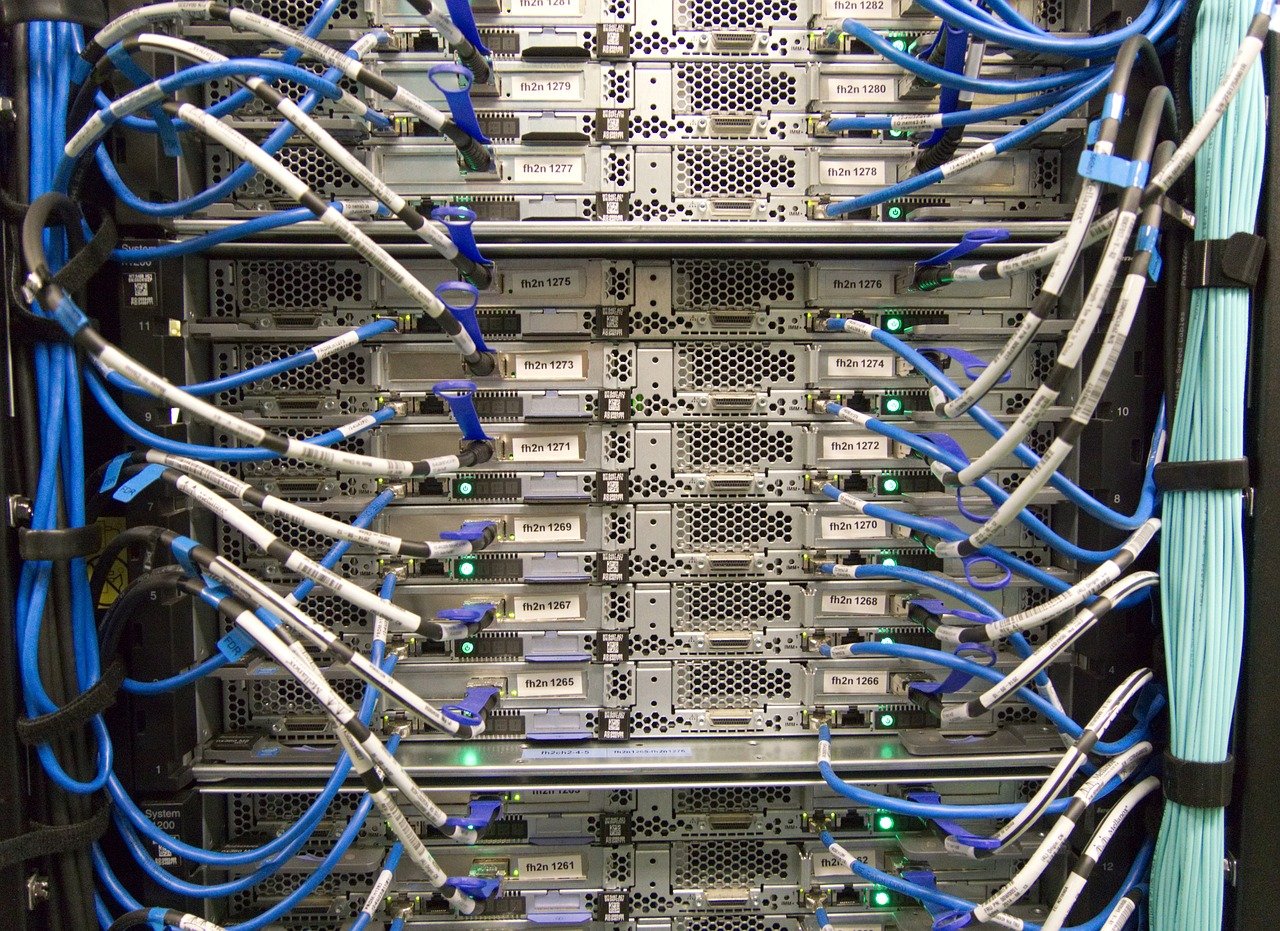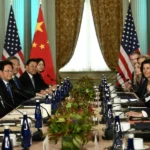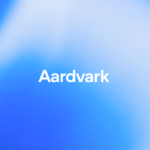Elon Musk’s race to dominate the AI landscape took a significant leap forward with the unveiling of Colossus, a supercomputer Musk claims is the most powerful AI training system ever built. Powered by a staggering 100,000 Nvidia H100 GPUs, Colossus is already a formidable force, and it’s set to double its capabilities in the coming months, adding another 100,000 GPUs, including 50,000 of Nvidia’s next-generation H200 chips. This aggressive expansion underscores Musk’s ambition to lead the AI arms race against other tech giants like OpenAI and Meta.
The Birth of Colossus: A Supercomputer Like No Other
Musk’s AI startup, xAI, launched Colossus in just four months, positioning it as a pivotal asset in the AI competition. This rapid deployment outpaces other AI clusters, which have similar numbers of GPUs but not within a single integrated system. According to Musk, Colossus will train the next generation of xAI’s large language models (LLMs), with the upcoming Grok-3 set to rival OpenAI’s GPT-4 by December.
“Excellent work by the team, Nvidia, and our many partners/suppliers,” Musk wrote on his social media platform, X (formerly Twitter), celebrating the milestone.
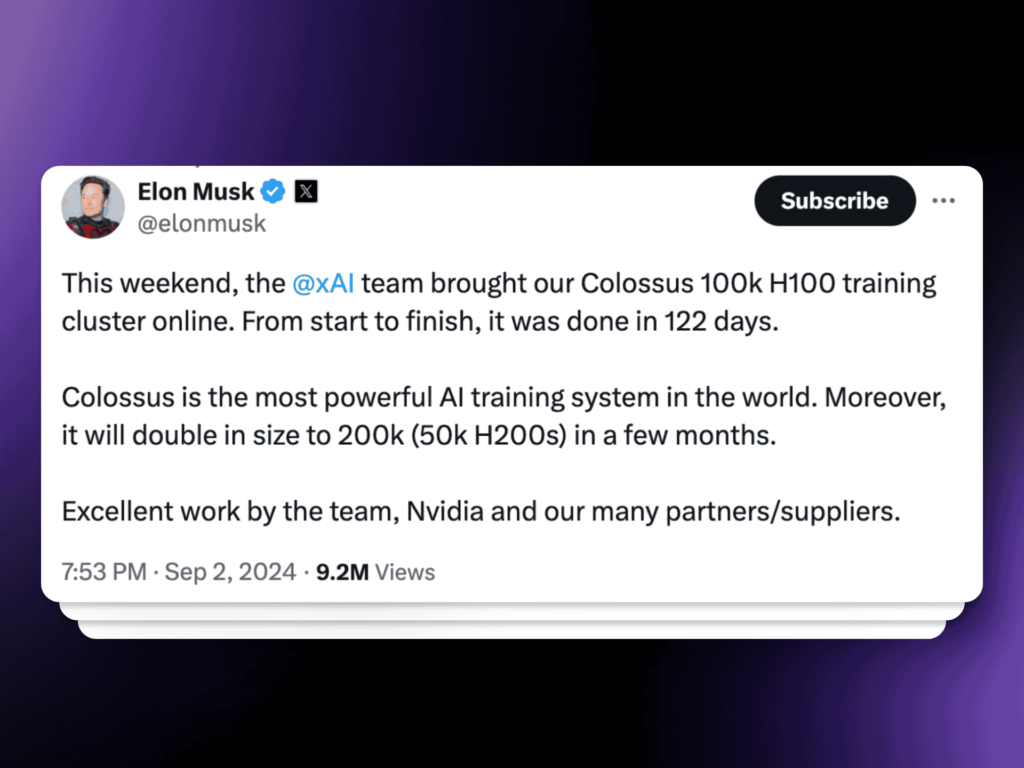
Partnerships and Power: Behind the Scenes of Colossus
The construction of Colossus involved collaboration with tech giants Dell Technologies and Super Micro Computer. Michael Dell, CEO of Dell Technologies, expressed pride in contributing to this groundbreaking project. In May, xAI secured $6 billion in Series B funding from top investors like Andreessen Horowitz and Sequoia Capital, boosting its valuation to $24 billion. This influx of capital has fueled xAI’s rapid growth and the deployment of Colossus.
However, Colossus’s immense power requirements are not without controversy. Environmental advocates in Memphis, Tennessee, where Colossus is housed, have raised concerns about the use of gas-powered turbines to meet the system’s energy needs. The Southern Environmental Law Center (SELC) has accused xAI of operating without proper air permits, exacerbating local air pollution. The nonprofit has called on local authorities to investigate and potentially halt turbine operations until compliance is ensured.
The Technical Edge: Nvidia’s Role in Colossus’s Supremacy
Nvidia, the leading supplier of AI GPUs, plays a crucial role in Colossus’s capabilities. The H100 and H200 chips that power Colossus are some of the most advanced AI processing units available, offering exceptional memory and bandwidth performance. While Nvidia recently introduced its Blackwell chip, which exceeds the H200’s specifications, the H200 remains a key component of the Colossus system.
The AI community has reacted enthusiastically to the launch of Colossus, viewing it as a game-changer in the industry. Nvidia and prominent figures like Cathie Wood, CEO of ARK Invest, have publicly praised the xAI team for this achievement, marking it as a significant milestone in AI development.
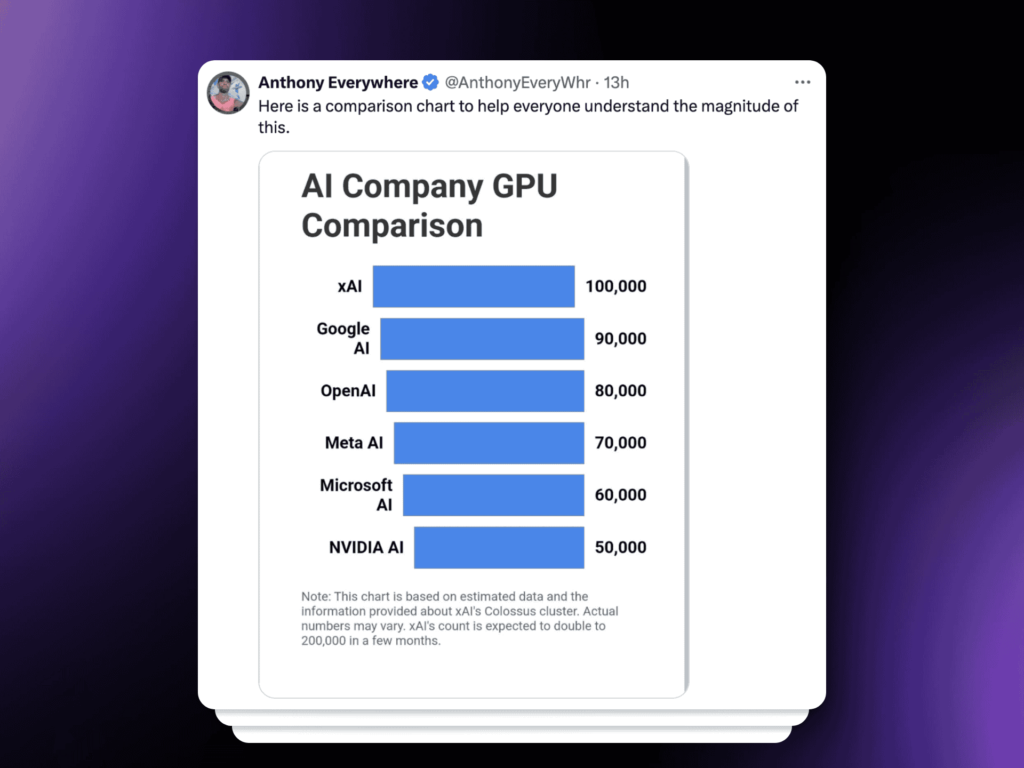
Environmental Concerns and Regulatory Hurdles
Despite its technical prowess, Colossus has sparked environmental and regulatory concerns. The SELC’s allegations about the turbines operating without proper permits put a spotlight on the environmental impact of such massive computing infrastructure. Musk’s vision of AI dominance comes at a considerable environmental cost, highlighting the need for sustainable energy solutions as AI systems scale.
Moreover, Musk has been an outspoken advocate for AI regulation, calling for responsible development practices. He supports legislative efforts like California’s Senate Bill 1047, aimed at regulating AI technologies, despite pushback from some in the tech community who fear it could hinder innovation.
What’s Next for xAI and Colossus?
As Colossus scales up, xAI is poised to make significant advancements in AI research and development. The supercomputer is not just a technical marvel; it represents Musk’s broader ambition to redefine AI capabilities and secure a leading position in the AI sector. However, xAI will need to navigate complex regulatory landscapes and address environmental concerns to fully realize the potential of Colossus.
With Musk’s plans to integrate Colossus into a broader network of AI capabilities, including future partnerships with tech giants like Oracle, the next few years could see xAI pushing the boundaries of what AI can achieve — all while grappling with the challenges of ethical and sustainable AI deployment.
For more updates on xAI’s groundbreaking developments, keep an eye on Superintelligence News.

